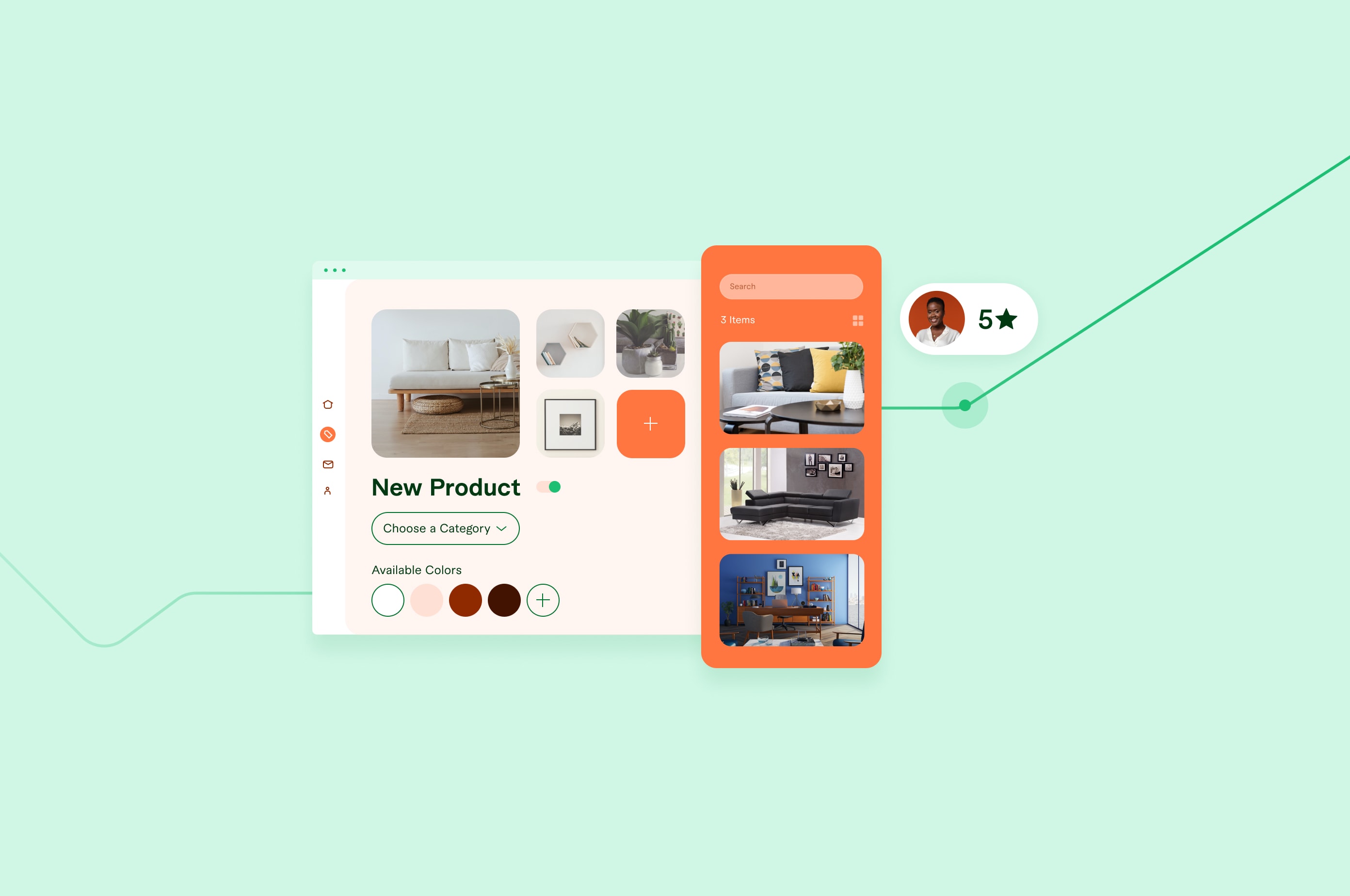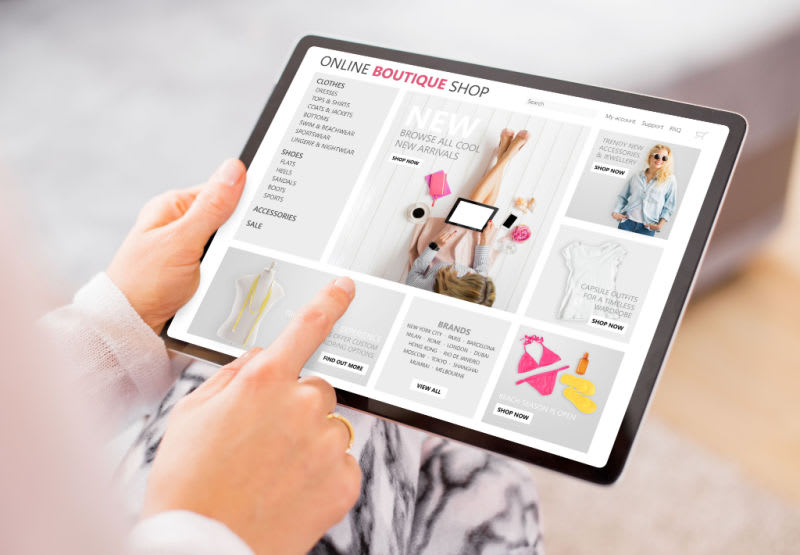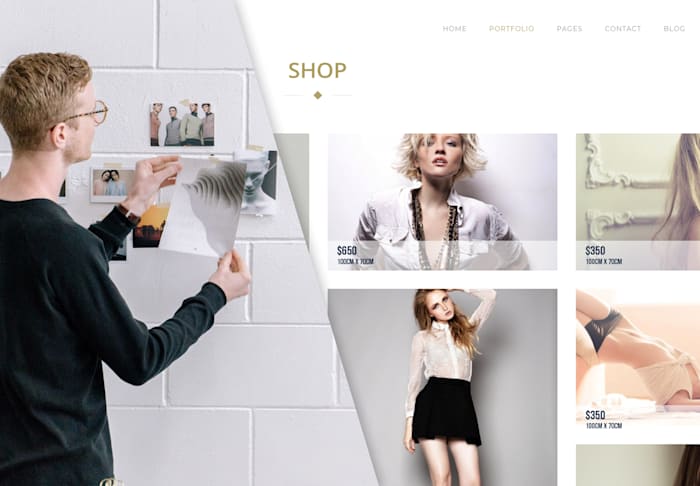How to Start a Clothing Business in 2024: 11 Simple Steps
Learn what it takes to open a new clothing business in 2024. Follow these 11 tips and examples for inspiration.
 January 2, 2024
January 2, 2024 9 minute reading
9 minute reading
In a world full of SHEINs, Zaras, Nordstroms, and H&Ms, the fashion industry can feel crowded.
The truth is, there’s always room for another clothing store—especially if what you’re offering is unique.
And with fashion ecommerce estimated to be worth more than $1.2 trillion by 2027, there’s never been a better time to dip your feet into the clothing industry.
Learn how to start a clothing business with this simple step-by-step guide.
Find an expert web developer on Fiverr
11 steps to start a clothing business
Having a great business idea or beautiful clothing designs is only part of the journey. To capitalize on the booming fashion ecommerce market and be successful, you’ll first need to learn how to launch a clothing business.
Follow these steps to get started:
1. Pick a niche
Picking a niche helps you offer products that connect with your target customers’ needs and wants.
For example: Will you sell men’s, women’s, or children’s clothing—or a combination of all three? You also should choose a specialty, like sportswear, vintage, or maternity clothing.
To find a niche for your clothing business:
Find out what you’re passionate about
Learn everything you can about that niche
Identify your potential customer and the clothing they buy
Position yourself to capitalize on the niche and grow your business
Take Natalie Amaro. The fashion designer and creative force behind NTA, a slow fashion brand, offers affordable, handmade clothing with a focus on sustainability and ethics, targeting the conscious consumer.
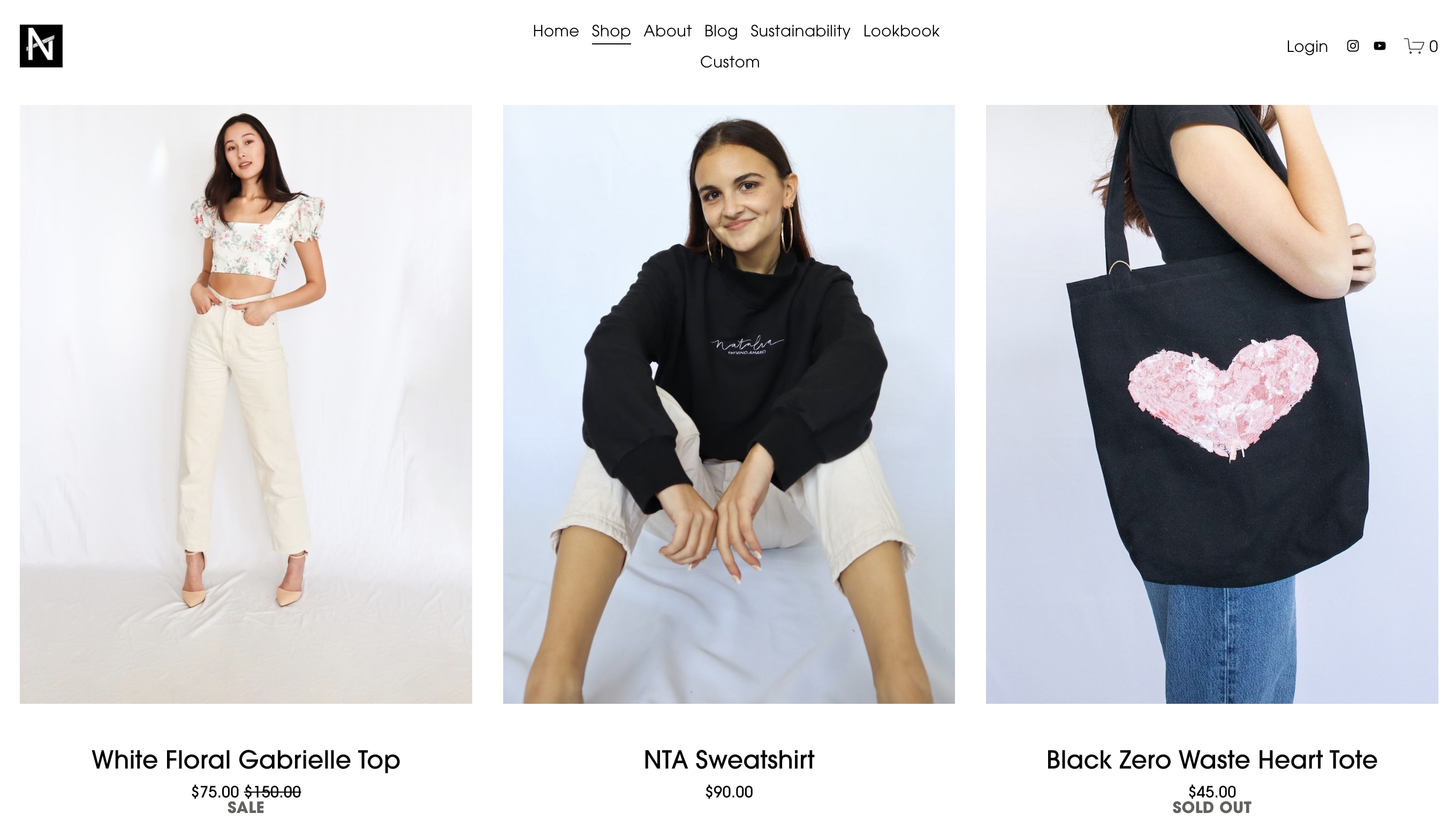
Source: NTA
By narrowing down her passions and exploring those ideas, Amaro built and grew her small business.
2. Identify market gaps
You can’t run a successful business on passion alone. Identify a common frustration or problem your product can solve that isn’t currently being solved by someone else.
Is it plus-size clothing that gives women sized 10 to 28 more choices of clothes that fit them?
Universal Standard is a plus-size clothing brand that began out of sheer desperation.
The brand’s founders, Alexandra Waldman and Polina Veksler, saw a need in the market and started the clothing business to cater to plus-size women looking for sleek, high-quality, minimalistic clothing. This proved to be a big hit with their target market.
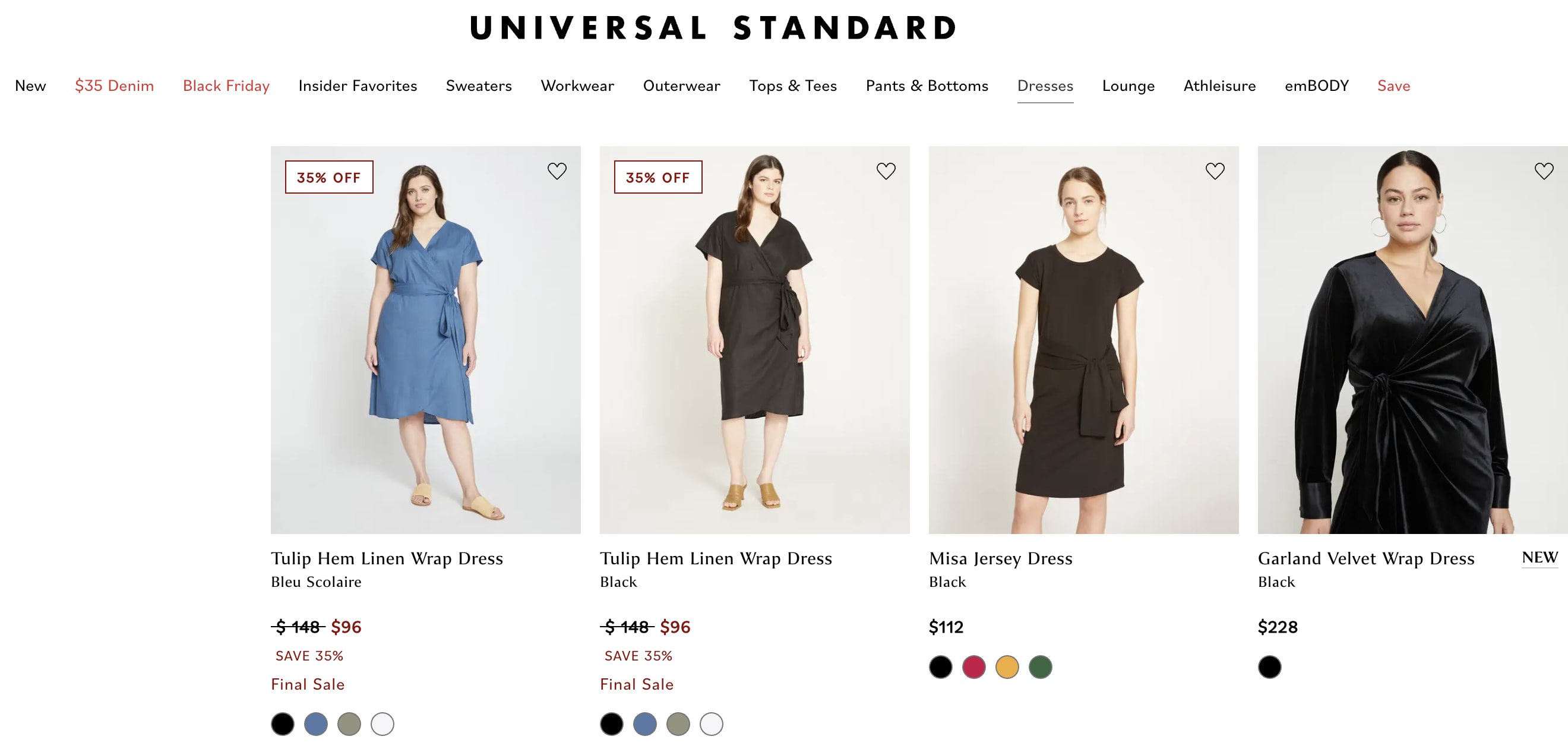
Source: Universal Standard
Perform a competitive analysis to:
Find out what products should exist that the competition isn’t offering
Learn about market trends and gaps, product and service pricing, best practices, and opportunities in your niche
Analyze how competitors position their products
3. Write a business plan
While you can succeed with or without a business plan, having one, or even a basic outline, can be helpful.
A business plan:
Serves as the blueprint of your business
Shows the complete picture of your vision, mission, and feasibility
Guides your journey when starting a business
Validates your idea and helps you think things through efficiently
Ensures your finances are in order as your business grows
When writing a business plan, make sure it includes startup costs, like design, manufacturing, material, and labor. Not sure how to write one? Hire one of Fiverr’s freelancers to help craft a professional business plan that lays a foundation for your company’s success.
4. Choose a business model
A business model is the core framework you’ll use to operate profitably and provide value for customers.
With an effective business model, you can:
Identify the products you offer
Understand your target market
Explains the customer value proposition and pricing strategy
Offer a sustainable competitive advantage
Common business models include:
Handmade clothing: You make the clothing and fulfill customer orders on your own.
Manufacturing: A third-party clothing manufacturer handles the manufacturing process and ships to your warehouse.
Dropshipping: A third party makes the clothes, holds the inventory, and takes, fulfills, and delivers customers’ orders. You can curate clothing from different sources, like T-shirts, preorder or order them on demand, and dropship them.
Print on demand: You design the clothes and a third-party makes them and fulfills the orders.
Reselling: You buy other brands’ clothing and resell them in your online store.
You can use one model or mix and match different models to meet your and your customers’ needs.
5. Develop your brand identity
Your brand identity distinguishes your clothing business from the competition.
Strong branding impacts how your business makes people feel while showing your target audience how you can address their needs or solve a problem.
Your brand assets, messaging, marketing strategy, and promotion tactics work together to create and foster your company’s unique brand identity.
When developing a brand identity, figure out your brand values, voice, aesthetic, and story. Then, pick a brand name and design brand assets, such as:
Logo: Gives customers an impression of what your brand does and stands for.
Color scheme: Your brand colors can communicate and elicit different responses and will apply to your business logo and brand collateral.
Brand messaging and voice: Determine the brand voice and tone that will most resonate with your target demographic.
Website design: Create an online storefront experience that aligns with how you want customers to feel. Incorporate elements like ease of use, accessibility, and sophisticated designs based on your brand identity.
Packaging: Your product packaging design will communicate volumes about your brand. For instance, expensive packaging communicates your brand is high end.
Social media channels: Social media may be the first place people see your brand. Ensure your brand identity is consistent across your social media accounts to build recognition and trust—and make sales.
6. Choose a price point
The pricing strategy you choose will affect who your audience will be, your cash flow, sales tax, and profit margins, and the expenses you can handle.
Conduct market research to find out the best way to set prices based on your merchandise. Determine your markup amount and pick the pricing technique for your type of clothing and store, so you can discount merchandise effectively.
The price points you pick must align with your market and fund your production costs.
7. File a legal structure
When choosing a legal structure for your clothing business, review the different business entity types available to you, their potential business taxes, and the structuring implications for your income.
The two most common entities for clothing companies are:
Sole proprietorship: Easy to set up but doesn’t protect your personal assets. If your business is sued or goes under, creditors might use your personal assets to pay off debts or liabilities. Plus, all profits and losses you make will pass through to you, which you’ll then report on your personal tax returns.
Limited liability company (LLC): Has more setup formalities and paperwork and is owned by one or more people. LLCs are legal entities separate from their owners. They pay federal income taxes on their profits from the business but aren’t liable for the company’s debts. If the LLC is sued or goes into debt, the owners’ personal assets aren’t used to pay off liabilities or debts.
Need help with legal business structures and tax issues? Find a tax consultant on Fiverr to help you with your business registration processes.
8. File a business license application
When registering your clothing business, you’ll need a business license and/or permit to operate legally—even if you’re operating online only.
Consider your local, state, and federal jurisdictions when registering. Then, gather your personal and business information, fill out the required forms, and pay the relevant fees.
To obtain a business license, file for an employer identification number (EIN). Then, acquire a business license or permit from your state. Depending on the state you operate your business from, you may pay state license and permit fees ranging from $0 to $5,000.
9. Create an online store
When running a brick-and-mortar store, you need a physical storefront in a location that sees a lot of foot traffic from a large customer base.
With an online store, you only need an affordable, easy-to-use ecommerce platform, like Shopify or Etsy. You can build your website from scratch or use one of the website templates your preferred ecommerce platform offers. The platform you pick should also support your product quantity and scale with your fashion business as you grow.
Starting an online business may seem taxing compared to listing your clothing on online marketplaces, but when done right, it’s more profitable. Once you pick an ecommerce website theme or create an online store using an ecommerce website builder, you can customize it to fit your clothing brand and add as many products as you wish.

Source: Aday
You can build your online clothing store yourself or use the easier route: find and hire a talented web developer and web designer from Fiverr to develop, build, and maintain your store.
10. Set up shipping
Shipping is more than just logistical—it’s a core part of the shopping experience.
Besides the paperwork, logistics, customs, and taxes involved in shipping, it also comes with out-of-control costs and challenges, including:
Lost packages
Hidden fees
Damaged products
Shipping containers
Theft
Bad weather
Unplanned global events
Any hitches in order fulfillment affect your customers and your bottom line. That’s why you should take time to set up your shipping process.
Some ecommerce platforms offer default shipping rates and options based on your store’s location and merchant insights. You can use either the default rates and tailor them to your business or come up with your own shipping rates.
Decide on a shipping strategy and how much you want to charge based on where you’ll ship, the packaging you’ll use, and the modes of shipping you’ll provide.
Common shipping strategies you can use, include:
Free shipping: You can offer free shipping as a marketing tool or based on cart value. Calculate the average cost to ship your products, then include a portion of your shipping fees into your products’ prices.
Flat-rate shipping: Charge a single flat rate for all products, or set weight-based or price-based rates. This model offers predictable and consistent costs to customers at checkout. Consider the average price for shipping a package, then calculate the shipping fees so you don’t overcharge or undercharge.
Carrier-calculated shipping: With this strategy, you can charge exact shipping costs at checkout to protect your profit margin.
You can also offer local delivery or in-house pickup for customers located close to your physical store’s location.
Nike, for example, offers multiple shipping options to members and guests. Nike members get free standard shipping on orders of $50 or more, plus discounted expedited shipping. The company also offers free same-day in-store or curbside pickup for eligible orders at participating Nike stores.
Establish policies for your clothing store that anticipate problems or questions concerning day-to-day operations, including:
Store hours
Customer service
Loss prevention
Returns
Damages
Set up a dedicated page on your online store to handle such issues, like Zara’s exchanges, returns, and refund page:
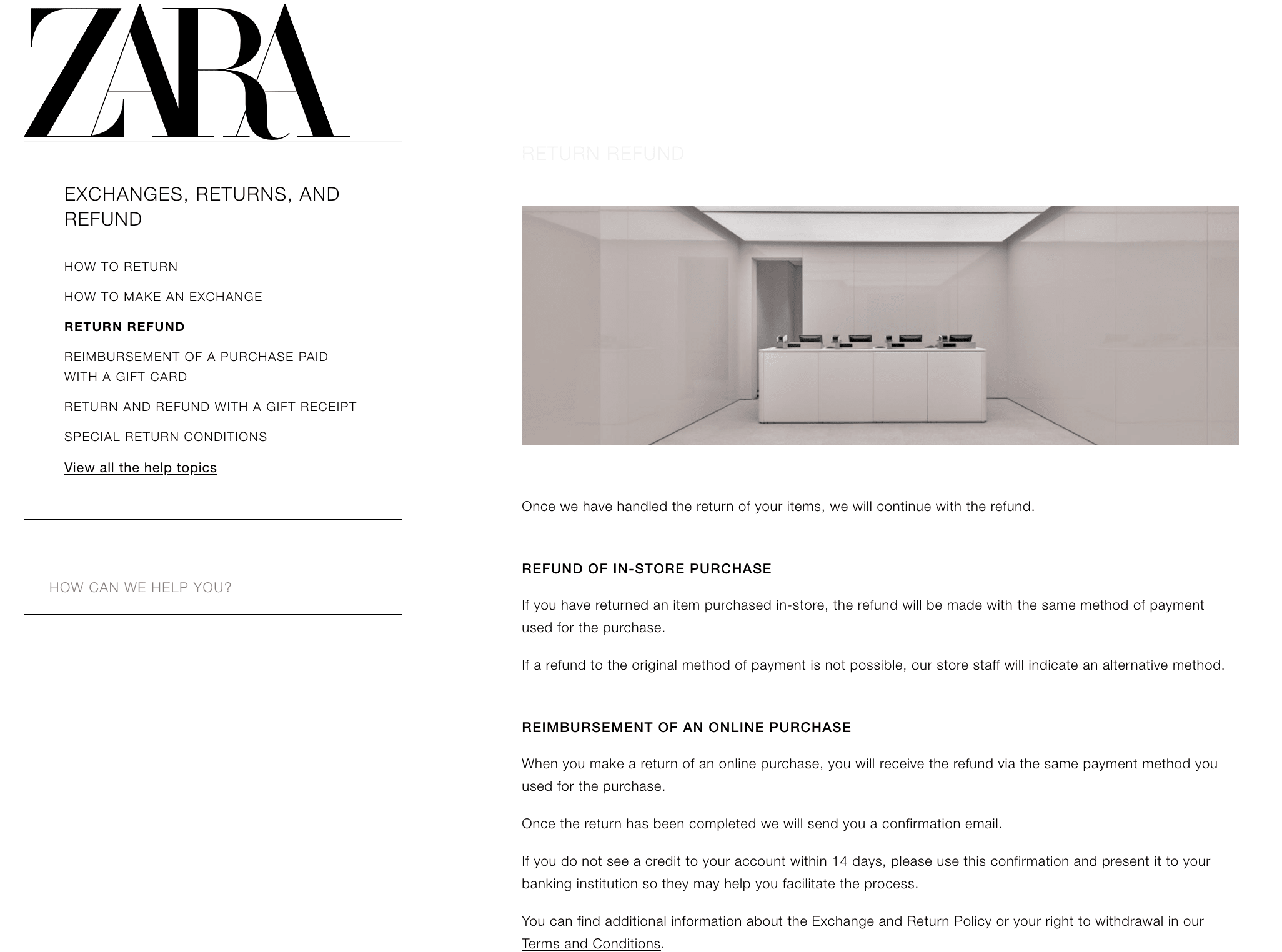
Source: Zara
12. Market your clothing business
Once you have a business name and your clothing store, create a marketing plan that focuses on your store’s unique aspects and how customers will benefit from shopping with you. The goal is to create brand awareness, drive traffic to your store, and convert leads into sales.
Here are some quick marketing options to get started:
Search engine marketing: Search engine optimization (SEO) helps your business rank on Google and other search engines, so people can find your store. Use organic SEO marketing through blogs, videos, or social media, or pay for Google Ads to drive traffic to your store that could lead to sales.
Social media marketing: Social media platforms, like Instagram, Facebook, and TikTok, are fantastic sales channels you can start marketing your store on for free. Show off your products using paid social media ads, promoted posts, or influencer marketing through collaborations with influencers, YouTubers, and other celebrities. This gives your business credibility, helps you stand out, and gets your products in front of your target audience.
Email marketing: Build an email list and send marketing messages to inform or sell to your target audience or build customer loyalty.
Content marketing: High-quality images are a must-have when marketing your clothing store—but video is the current king of content. Create a variety of attention-grabbing content assets like blogs, videos, images, and more so customers can imagine themselves using your products. You can also use AI-powered content marketing tools to power your strategy.
The North Face, for instance, creates engaging reels, videos, and stories tailored to its target audience to market its products online.

Source: The North Face
Don’t know how to create visual assets for your clothing brand? Create a graphic design brief, then use Fiverr to find talented graphic designers for your project.
When you’re ready to open your virtual or physical doors, let everybody know, including your loved ones and social media connections. Offer promo codes, sponsor events like fashion or trunk shows, or use physical ads like billboards or fashion and lifestyle magazines.
Stitch your path to success
Launching your own clothing line can seem challenging. Luckily, you can use these 11 steps as a springboard to turn your small business into a globally beloved clothing brand.
Need some help to get started? Turn to Fiverr to find and hire talented freelancers with expertise in setting up a clothing business.
Our digital marketplace hosts expert freelancers skilled in business registration, business planning, market research, product research, store management, and more. Fiverr can expand your talent pool as far as you’d like to look while removing the obstacles of getting the help you need by streamlining the admin work related to onboarding and paying freelancers.
Don’t let resource limitations keep you from setting up your clothing business. Sign up to Fiverr to see what’s possible.
